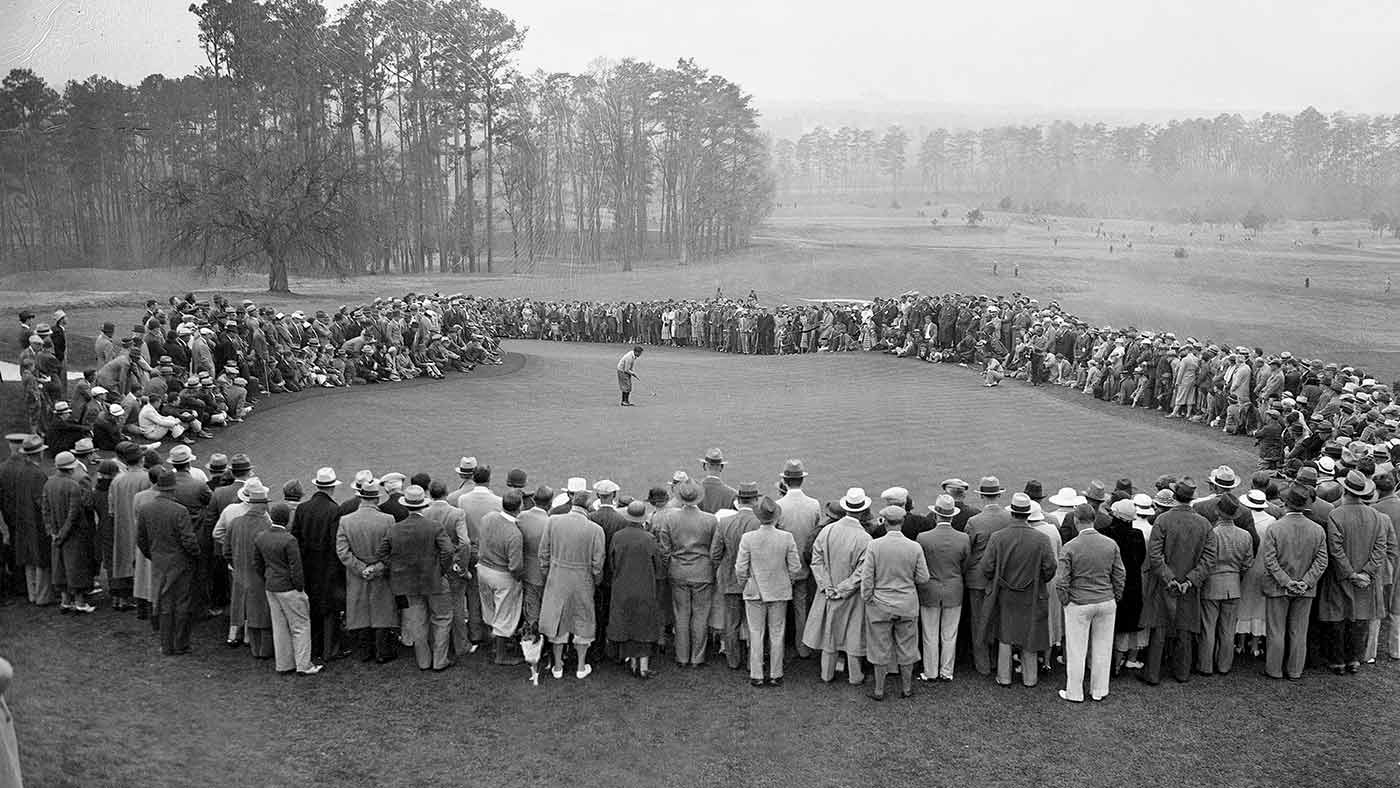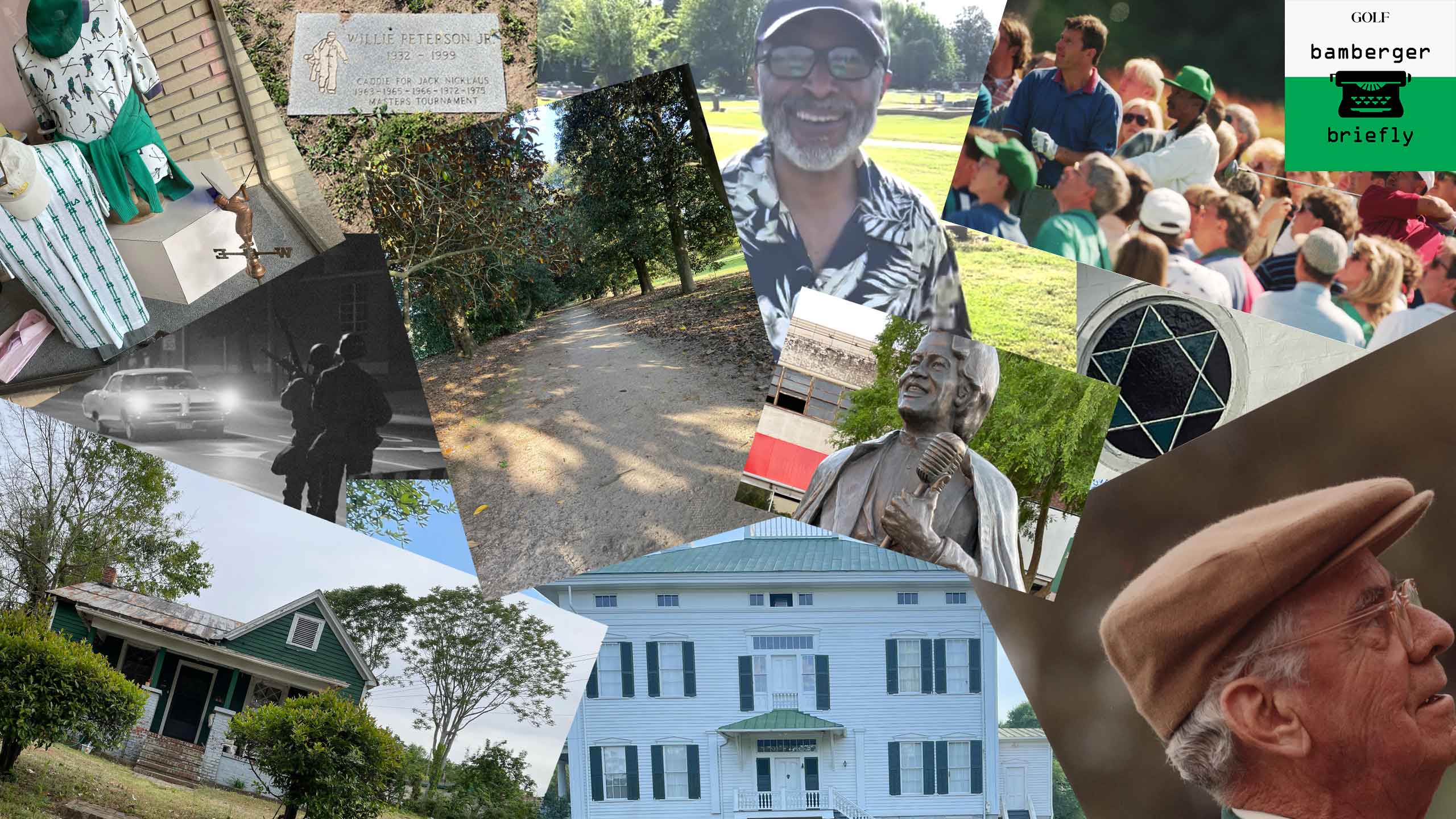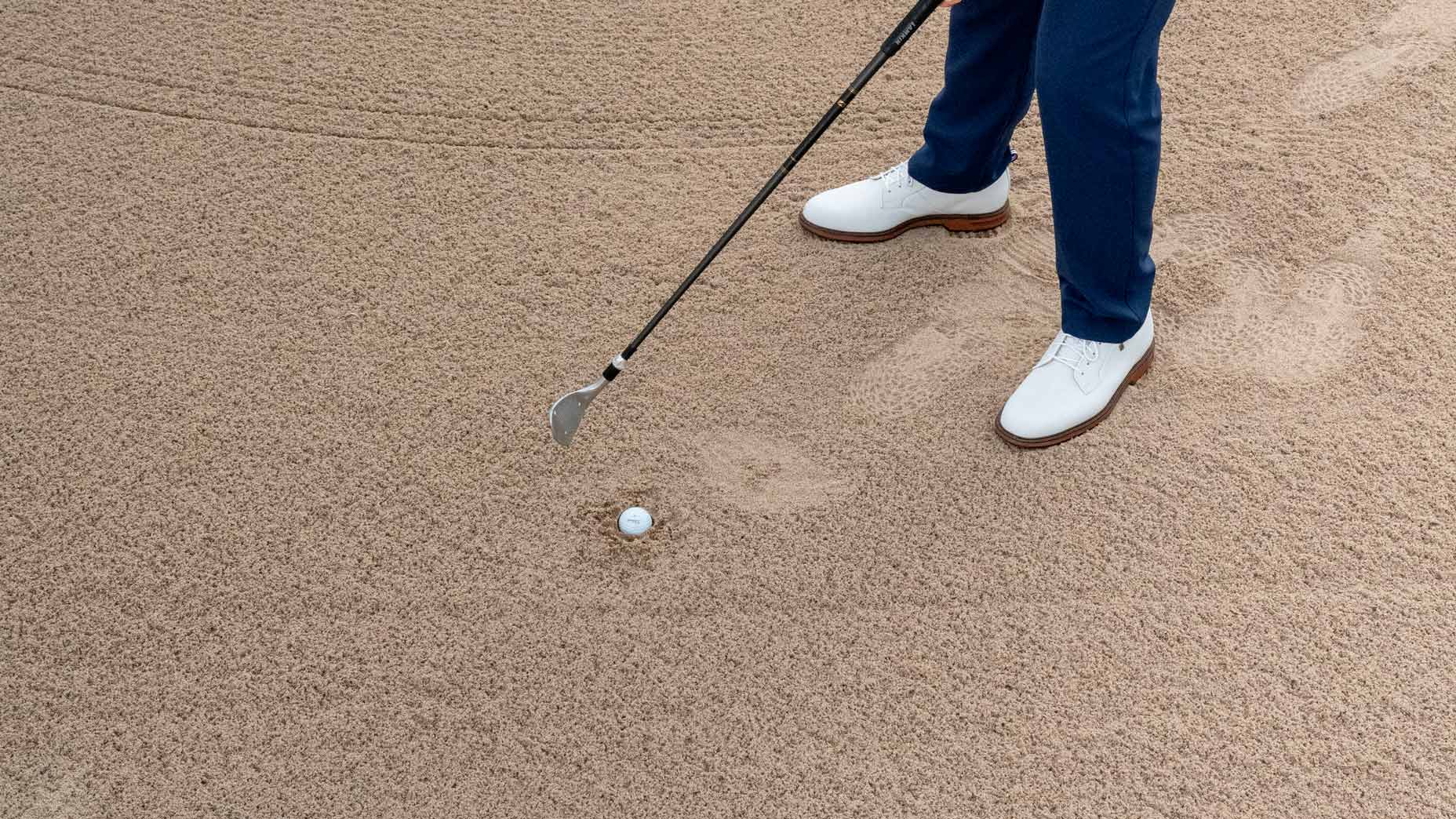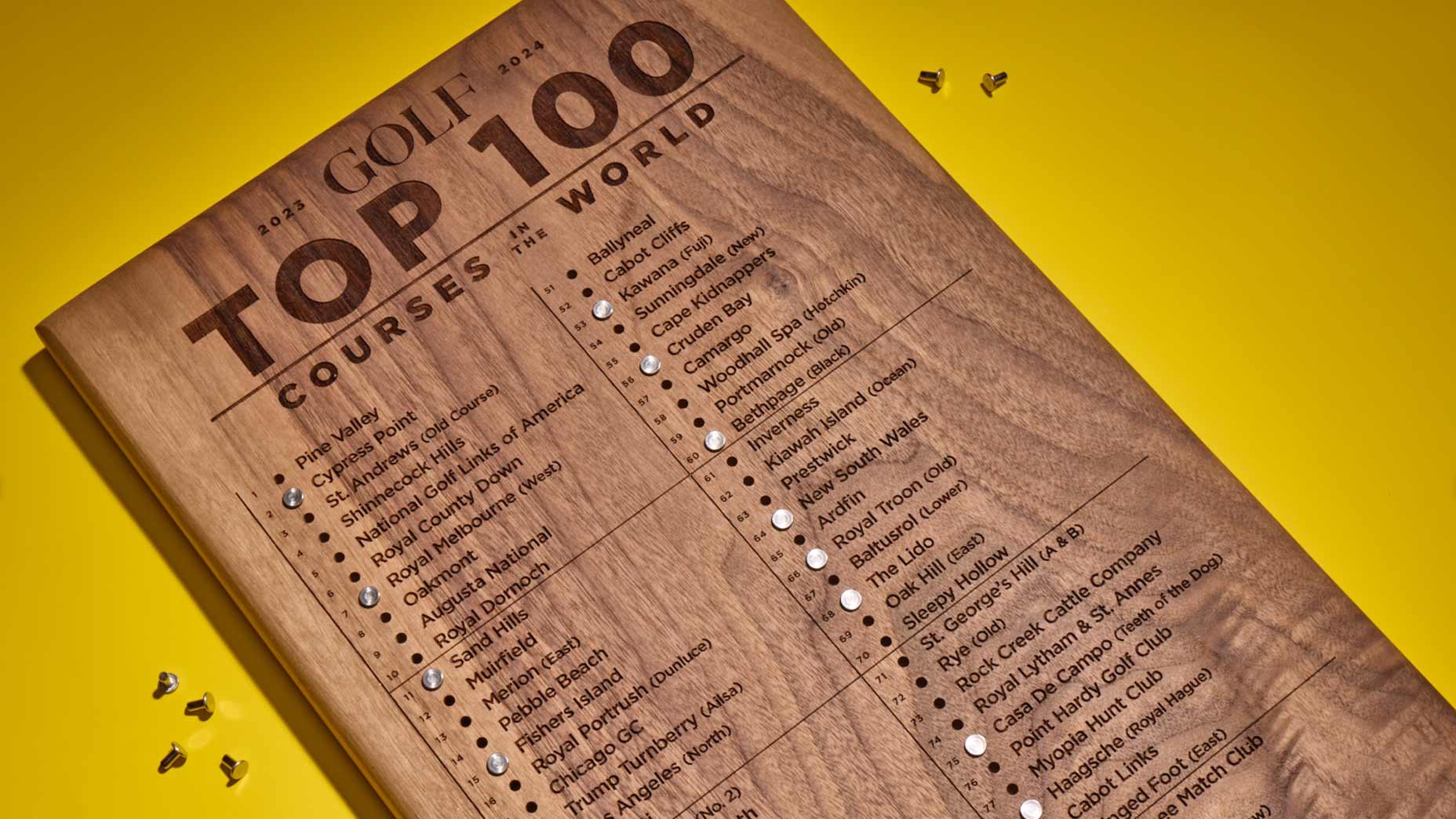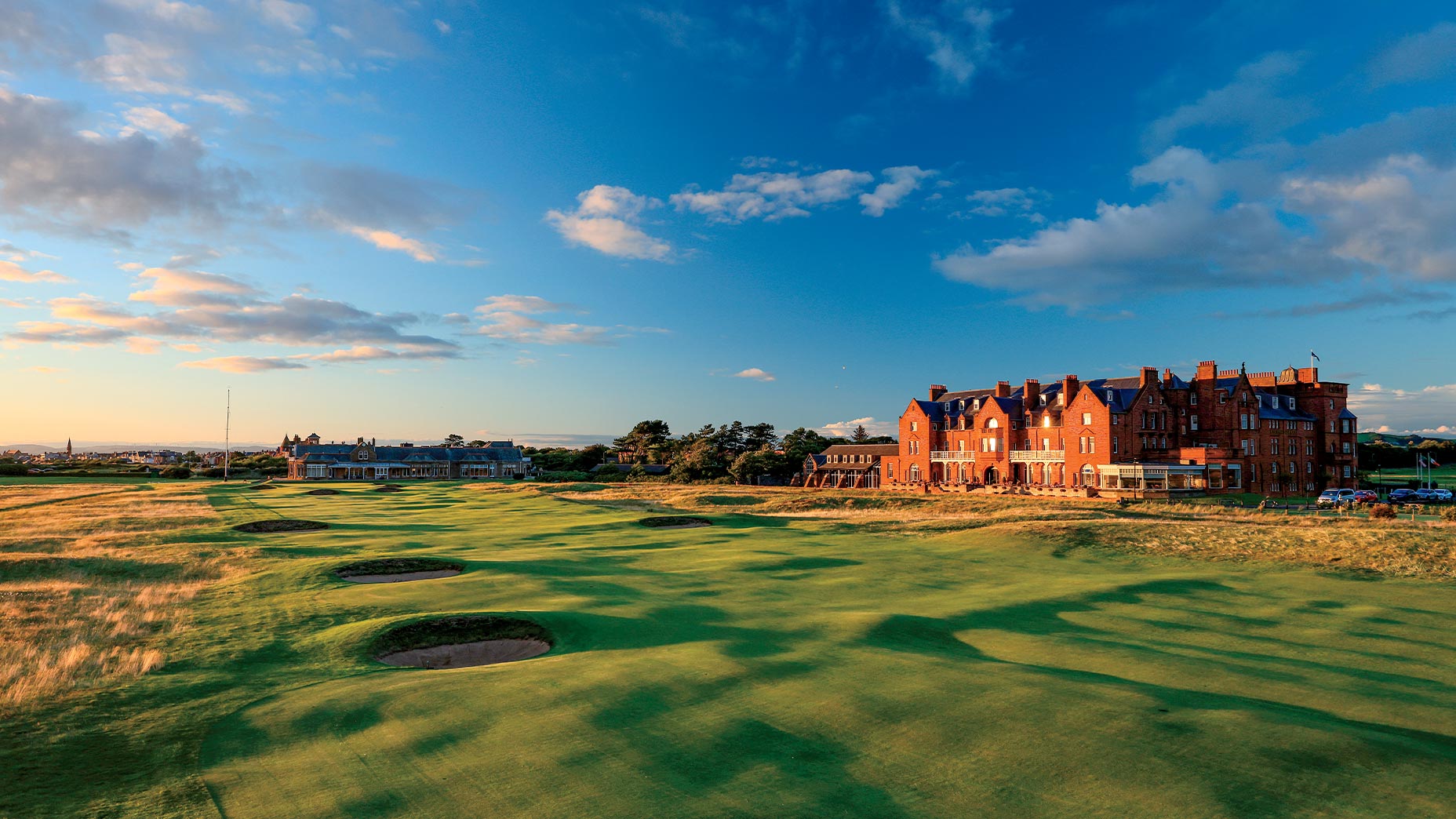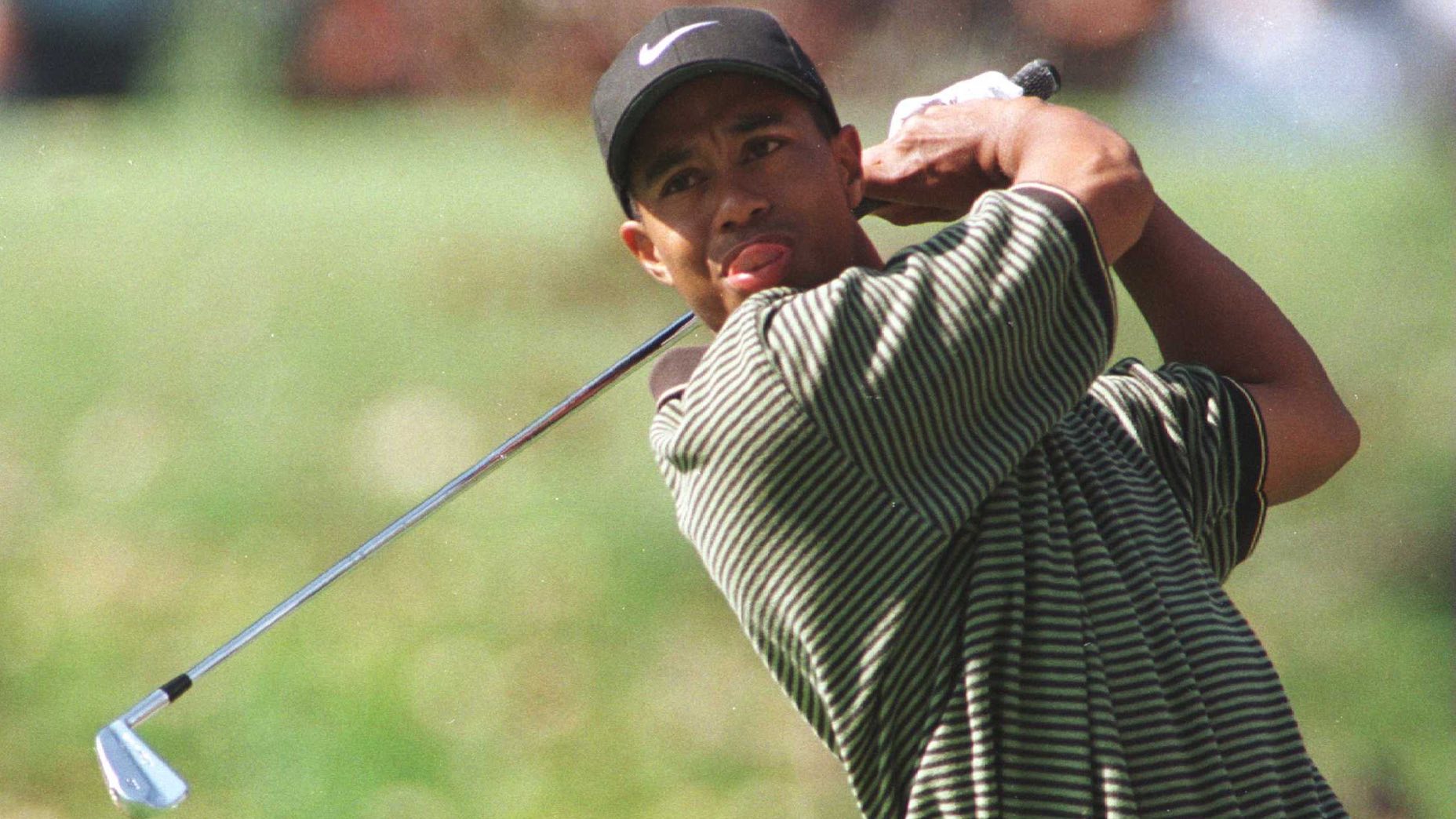When Ralph Stonehouse and Johnny Kinder stood on the tee of what is now the 10th hole at Augusta National on Thursday, March 22, 1934, the most interested onlookers were likely perched upon nearby tree branches, chittering about spring.
Once Stonehouse, playing out of Indianapolis, and Kinder, out of Asbury Park, N.J., put the lash to it at 10 a.m., the first Masters Tournament was underway. The two relatively unknown professionals hadn’t merely pushed the start button on what would become golf’s annual rebirth and legend factory, they had triggered a 35-minute countdown to the competitive return of the self-exiled ruler of the golf world.
Eleven years from your reading of this, the Masters will celebrate its 100th birthday (if not its 100th playing). However, in 1934, the tournament was no shoo-in to reach its current exalted status, let alone be considered the fourth major championship of golf’s modern era. For starters, the U.S. economy was just starting to creep back from rock bottom during the Great Depression, but it still had a long way to go. Spectators did not turn out by the tens of thousands. An eight-day pass (including four days of practice rounds and other events, such as a long drive contest) went for $5.50 — that kind of dough could buy a lot of food at a time when people were so busted and spirits were so broken that some citizens cheered on the criminal and occasionally violent antics of Bonnie Parker, Clyde Barrow and John Dillinger, all three of whom literally bit the bullet the same year.
Augusta, Ga., had a population of about 60,000 in 1934, and not too many folks were going to travel from Atlanta and pay to see the likes of Paul Runyan and Horton Smith, even if they were very fine golfers. Walter Hagen was a draw, of course, and he was there at age 41. Not so Gene Sarazen, who would have added juice to the star power of the invitee list, nor reigning U.S. Open champ Johnny Goodman. The week of the Masters, Sarazen departed for a global exhibition tour. Goodman, who today remains the last amateur to win the U.S. Open, stayed home in Nebraska, likely because he didn’t care to make the trip to Augusta or couldn’t afford it. Instead, as the opening round was being played in Georgia, Goodman shot 70 in a spring outing of members at the Field Club of Omaha.
Only two sportsmen in the U.S. at the time could have inspired more than a few hundred people to turn out at Augusta National. One was Babe Ruth, who, at that moment, was playing Grapefruit League ball, preparing for his final season as a Yankee.
At 10:35, the other megastar of the era’s sporting scene would step onto Augusta’s first tee and into the arena for the first time in four years. He was the winner of the Grand Slam in 1930 and nine other major titles dating back to 1923, a quarter-finalist in the U.S. Amateur at age 14 in 1916. He retired from competition at age 28, with no realm left to conquer.
It can be argued with some merit to this day that he is the greatest player in history. As co-creator of the Augusta National Golf Club and co-designer of its course, he was also the host of the first Masters, a job he took seriously. He wanted to play in the tournament, but he also knew he had to play and play along with a narrative not of his own making, namely that he had issued invitations to the world’s best players to come to his course and his tournament to see if they could defeat the man Grantland Rice and others sometimes referred to as the Emperor — Bob Jones his own self.
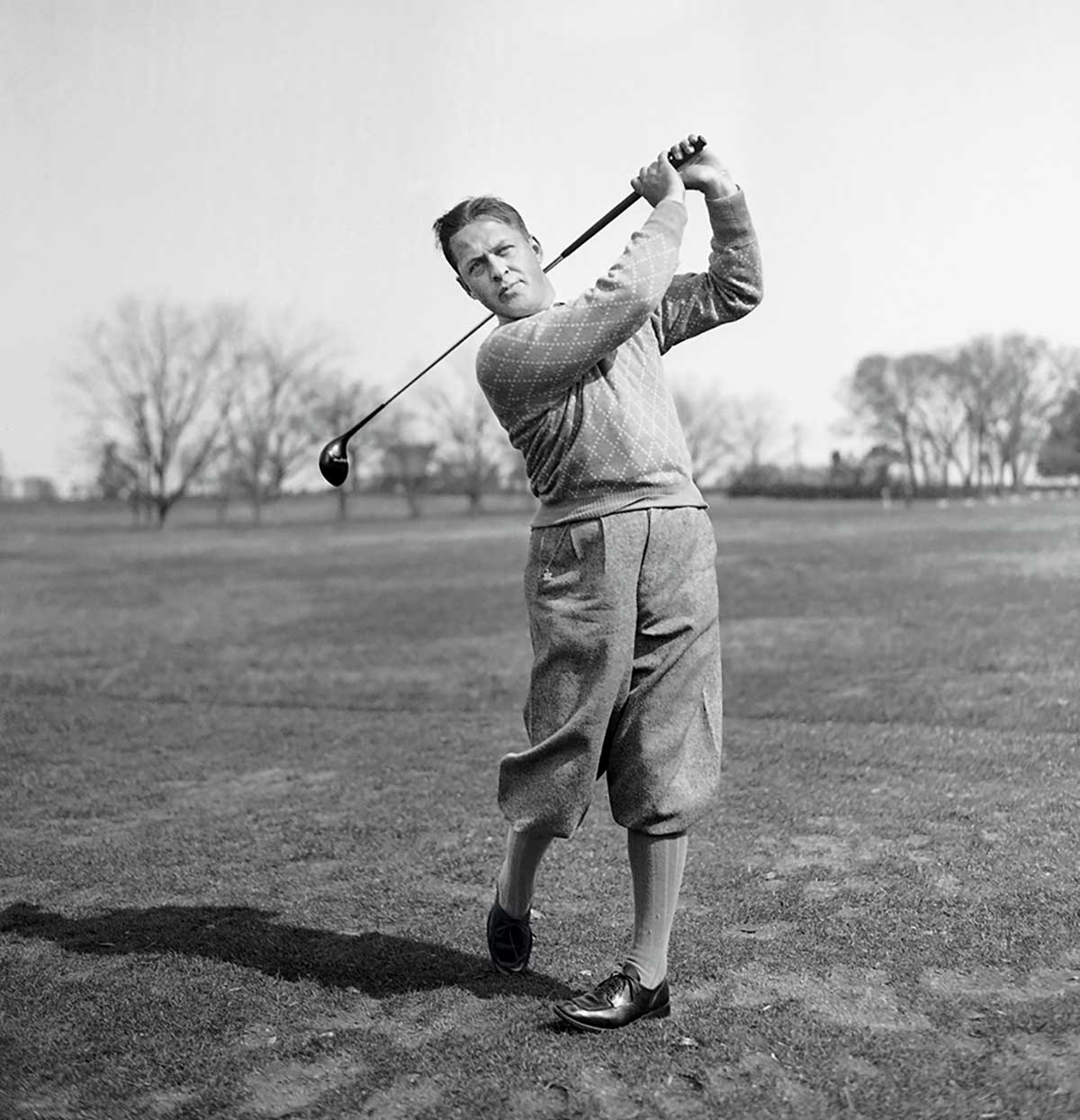
The golden age of American sports was waning by 1934, but the Golden Age of Sportswriting, led by Rice, was still going gangbusters. “Granny,” as some friends called him, was a widely syndicated scribe who, in 1924, almost single-handedly put Notre Dame football and Knute Rockne on the map by typing the most famous first sentence in the history of sports: “Outlined against a blue, gray October sky, the Four Horseman rode again.” It was no small bit of genius on the part of Jones and Augusta National co-founder Clifford Roberts to schedule the inaugural tournament during a time when many leading writers would be returning home from spring training, almost certainly by train and almost certainly through Georgia.
Even today, of course, the Masters isn’t the championship of anything — it’s a private club’s invitational tournament, which was clearly Jones’ intention all along. He never envisioned the event as a steel cage match in which he would take on all comers. But Rice and others, such as Ralph McGill, the sports editor of the Atlanta Journal-Constitution, knew an angle when they saw one. Jones summoning his would-be usurpers, and they, in turn, eagerly wishing to snatch his crown — well, that would sell papers.
“The audacity of his gesture in thus inviting the greatest field in golf to meet him here has caught the fancy of the public as nothing else has done,” wrote McGill early in the week.
Writers from the Associated Press and United Press picked up the baton from Rice and McGill, and, by Tuesday morning, March 20, every sports section in the country had one of its lead headlines devoted to Jones’ comeback. Among nearly 30 headlines of various sizes on its sports opener, the Fresno Bee gave predominance to “Bob Jones Will Return to Golf Wars This Week on Course of His Own Design.” The Bee’s editors deemed it a bigger story than “Bear Goes to Work,” which, if accurate, would have been more entertaining than the actual story about challenger Max Baer prepping for his heavyweight championship bout versus Primo Carnera.
Associated Pressman Dillon Graham set the tale of the tape: “Jones is playing several rounds a week on courses around Atlanta in preparation for his comeback. Occasionally, he comes here [Augusta] for a few days’ practice. Judging from his scores, his game is as good as ever. He’ll be a little heavier than his usual tournament weight, tipping the scales around 185.”
It was Rice, however, who played the hypemaster as Thursday drew near. Under the headline: “’Let’s Get Bobby!’ Professionals’ Cry on Eve of the Emperor’s Return to Battle,” Rice wrote: “Here is the one unique situation in competitive sport. Surrounded by old and young rivals who love him and admire him, the slogan still is ‘Let’s get Bobby.’ They are all after his scalp. And there isn’t one of them who won’t admit it is the hardest scalp to lift that sport has ever known.
“It is the most remarkable situation I have ever seen. There are more than 60 of the greatest golf players in the world, professionals and amateurs, and the one idea of this field is to beat Jones. Sport has never seen anything like this.”
Not content to paint Jones against the backdrop of golf, Rice positioned the “comeback” as something unprecedented in all sports.

The Masters has historically been the most innovative tournament in the world, constantly tweaking the player and fan experience for the better. The roots of that forward thinking almost certainly trace back to Jones, who gracefully shouldered absurd expectations and buildup long before anyone had ever concocted the fun-killing process of modern media training.
“Yes, I want to win every tournament in which I play,” said Jones to the writers. “But the odds are great here against any individual winning. I naturally am going to play my best and hope it will be good enough. I’ll try to put four good rounds together and let it get me where it will.”
As the anticipation among fans and writers grew, Jones’ practice rounds were breathlessly reported.
March 18 headline:
Bobby Jones Plays Well
Pairs with Ed Dudley to defeat Metz and Laffoon
March 21 headline:
Jones Is Defeated in Practice Round, by Grantland Rice
Rice wrote: “Bobby Jones’ massed phalanx of Georgia supporters ran into a young bombshell Tuesday. Bob and Ed Dudley caught some of the smoke from the winter circuit [on the nascent PGA Tour]. They tackled Paul Runyan and Horton Smith, two of the most brilliant winter campaigners, and were beaten 5 and 3 by the display of fireworks which Runyan and Smith touched off.
“This match, drawing the big gallery of the day, was played in the midst of a cool, roistering wind. Both young bucks shot 71, while Jones and Dudley were both ‘over 75.’ Runyan and Smith sounded their challenge to Bob Jones’ comeback campaign.
“‘I won’t have any alibi,’ said Jones. ‘I have been hitting the ball well, and that’s all I can ask for.’”
When Thursday finally arrived, Rice underscored the hullabaloo in the morning editions:
“General interest in the Jones comeback is astonishing. The crowd is pouring into Augusta along every highway. Two far-away visitors [competitors], General Crichley and Captain Stevens from London, report that Scotland and England look upon this tournament as one of the big sporting events of the year, and the leading British papers are giving it a big play.
“… The crowd expects Jones to win, not figuring fully the strength of the brilliant field he must beat.
“Thirty or 40 of these can fall down, as others surge through, but Jones can’t. Thousands of Georgians and other admirers from almost every section of the country are here to see him win, and that is a tall order when one man is facing the pick of the game… the next four days will be cluttered up with action and drama.”
Somewhere between the hyperbole and Jones’ comments lies the truth of how he viewed the week: He was trying to launch a tournament, not relaunch his career. Certainly, other players were not in Augusta in pursuit of Jones’ “scalp.”
Sandy Somerville, a fine Canadian player in the field, noted it appeared Jones was jeopardizing his chances of winning by “taking over too much responsibility of host,” attending personally to detailed arrangements and joining all social gatherings.
Indeed, it’s likely all the players empathized with Jones. The Thursday papers also carried a syndicated column by Paul Runyan, who would be paired with Jones that day.
“It may sound like a bit of sacrilege,” Runyan (or his ghostwriter) said, “but I do not believe Bobby stands much of a chance…. During the nearly four years Bobby has remained out of competition, golf has become a much faster game. Scores that won handily for a man in 1930 won’t win today.”
Come the reckoning, Somerville and Runyan were proved correct. The Baltimore Sun’s stack of headlines summed it up:
Jones Six Strokes Behind as Three Tie for Lead at Augusta
Half of Field Ahead of Bob
Atlanta Wizard Puts Up Ragged Performance with Chips and Putts at Augusta; Gallery of 1,000
Perhaps they hadn’t poured into Augusta along every highway, after all.
At one point during the round, after missing a short birdie putt, Jones nearly missed the two-foot comebacker. Walking off the green, he said to Runyan, “I damn near made 5 there, Paul. Can you imagine that?”
Allan Gould of the Associated Press, summarized Jones’ Thursday round: “The short, stocky figure of golf’s one-time Napoleon strode over the rolling battleground of Georgia today to revive a flock of vivid memories but struck only a few lashes of the commanding skill that marked his championship days… It wasn’t exactly Waterloo for Bob Jones… but the eminent Georgia barrister was unable to locate the target with any consistency at short range or match the swift pace of a combined charge by the old guard and the new.”
After another average round on Friday, readers awoke to the Saturday headline: “Rout of Jones Continues.”
In the end, Jones finished 10 shots off the pace, tied with Hagen. Horton Smith may have won, but the story the papers told was that Jones lost.
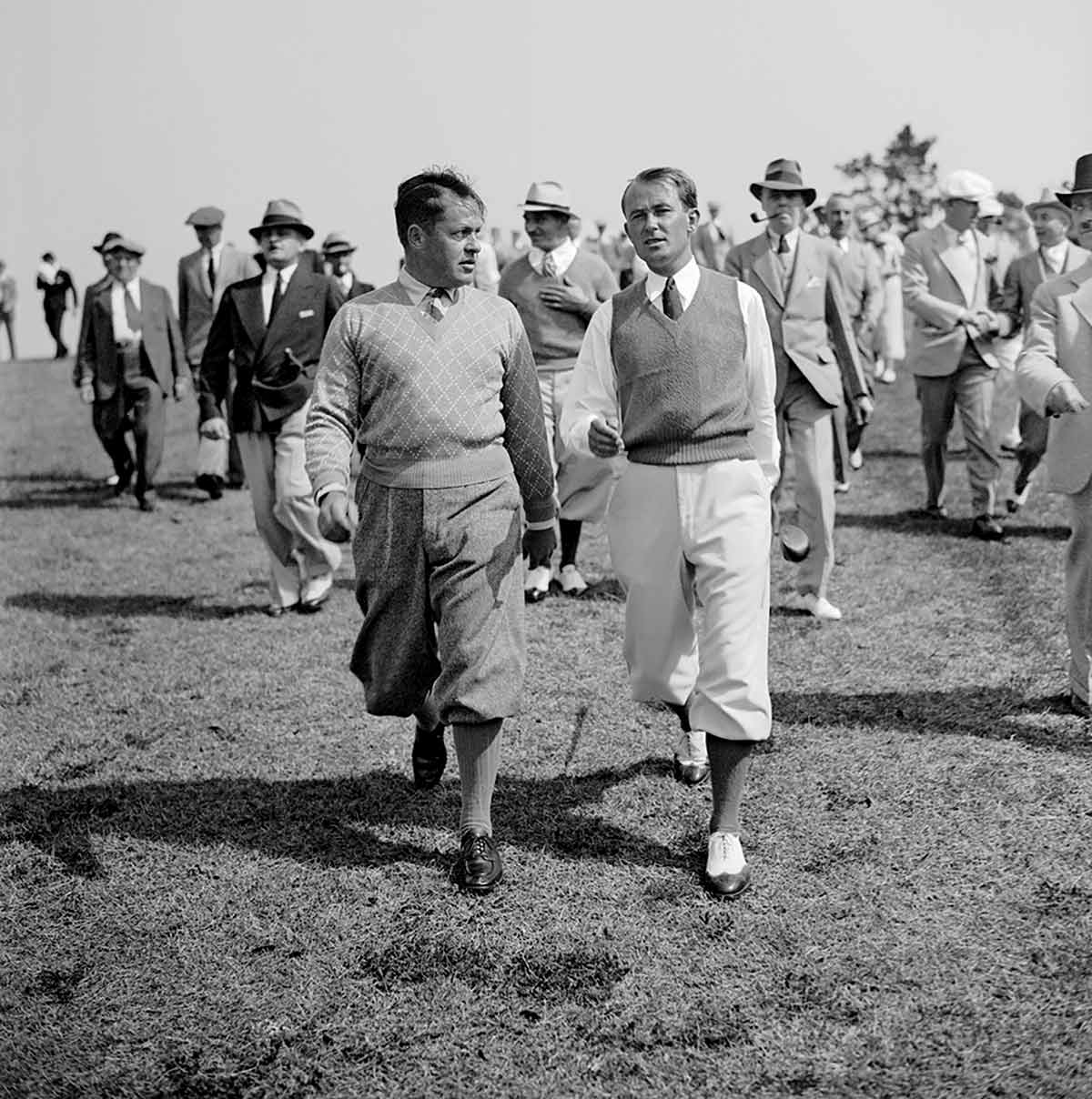
Of course, Jones didn’t lose at all. He had laid the perfect foundation for the Masters as we know it today. He had invited a sort of living hall of fame of golfers to participate, including many past their prime, such as Freddie McLeod, the 1908 U.S. Open champ; Chick Evans, winner of the U.S. Open and Ams in 1918; Long Jim Barnes, Jock Hutchinson and many others. This was a glimpse forward to all former champions being invited.
Jones had also raised the national and international profile of the event as no one else could, simply by not dissuading the writers from going hog wild on the comeback angle. In short, he did exactly what he meant when he responded to a writer who asked if he’d play in the U.S. Open at Merion that summer.
“I have no idea of returning to open competition,” said Jones. “I hope to have this Masters tournament an annual affair and will limit my competition to playing in it for the fun I get out of it.”
The heroics the press sought would arrive the following year, but not from Jones, who, astonishingly, was still touted by Rice (based on information from “a local bookie”) as the favorite to win the 1935 Masters. Instead, Gene Sarazen managed to fit the second Masters into his schedule, and, in the final round, he holed out for a 2 from 230 yards on the par-5 15th, eventually tying Craig Wood to force and win a 36-hole playoff.
Sarazen later said to Rice, “It’s a good thing I didn’t miss any putts on the three holes after the double eagle, or I would’ve been just another mug.”
But he didn’t, he wasn’t and genuine drama of the sort sports fans love had been added to the foundation Jones poured with his heart and soul, if not his game.

